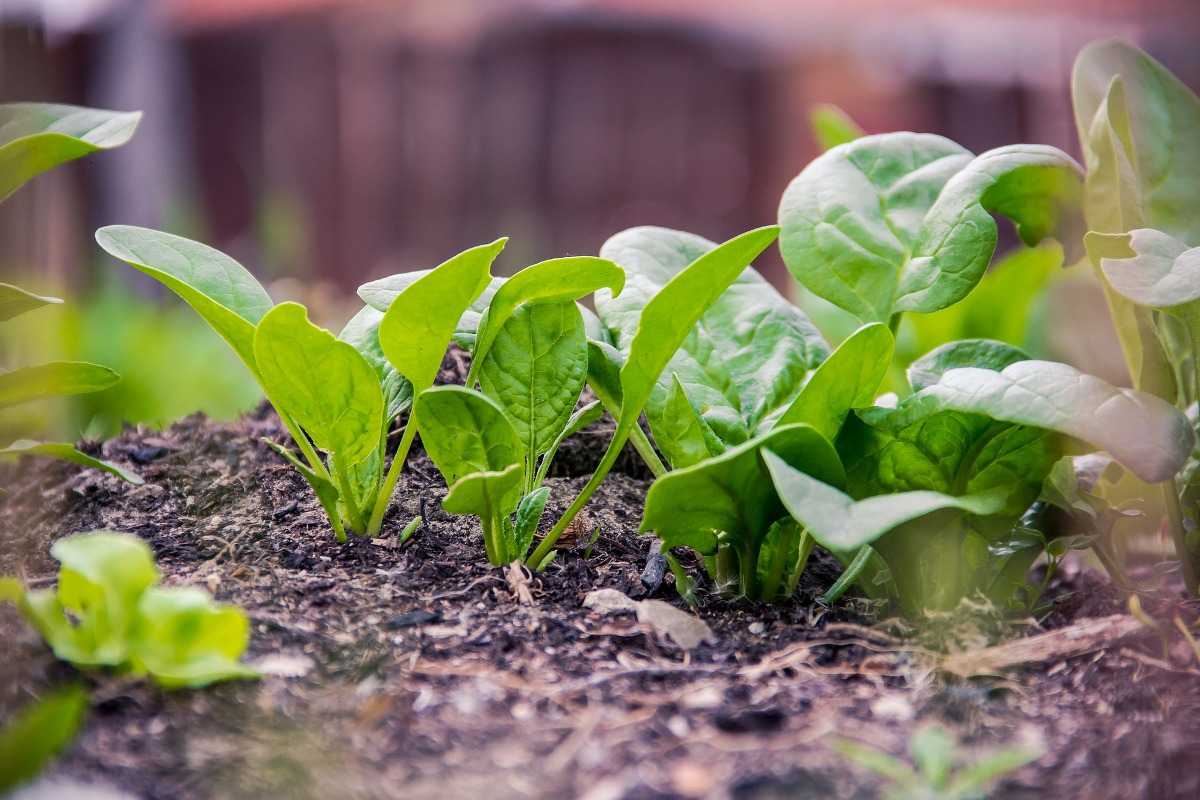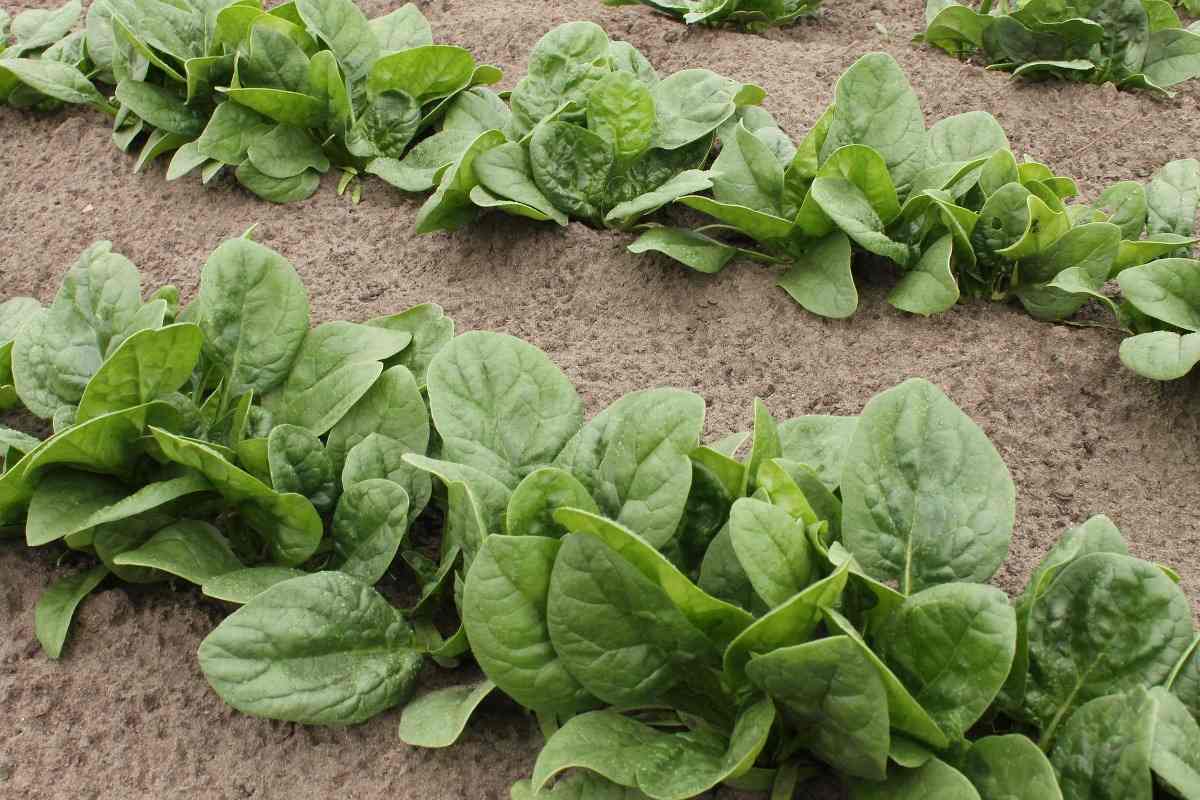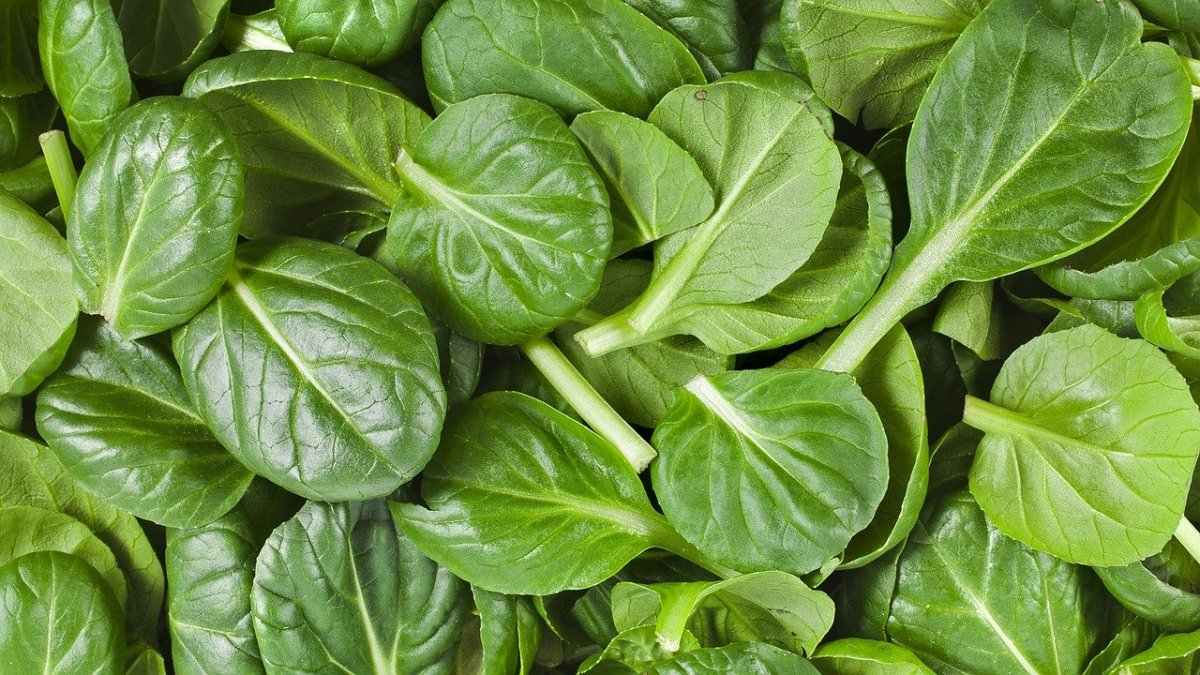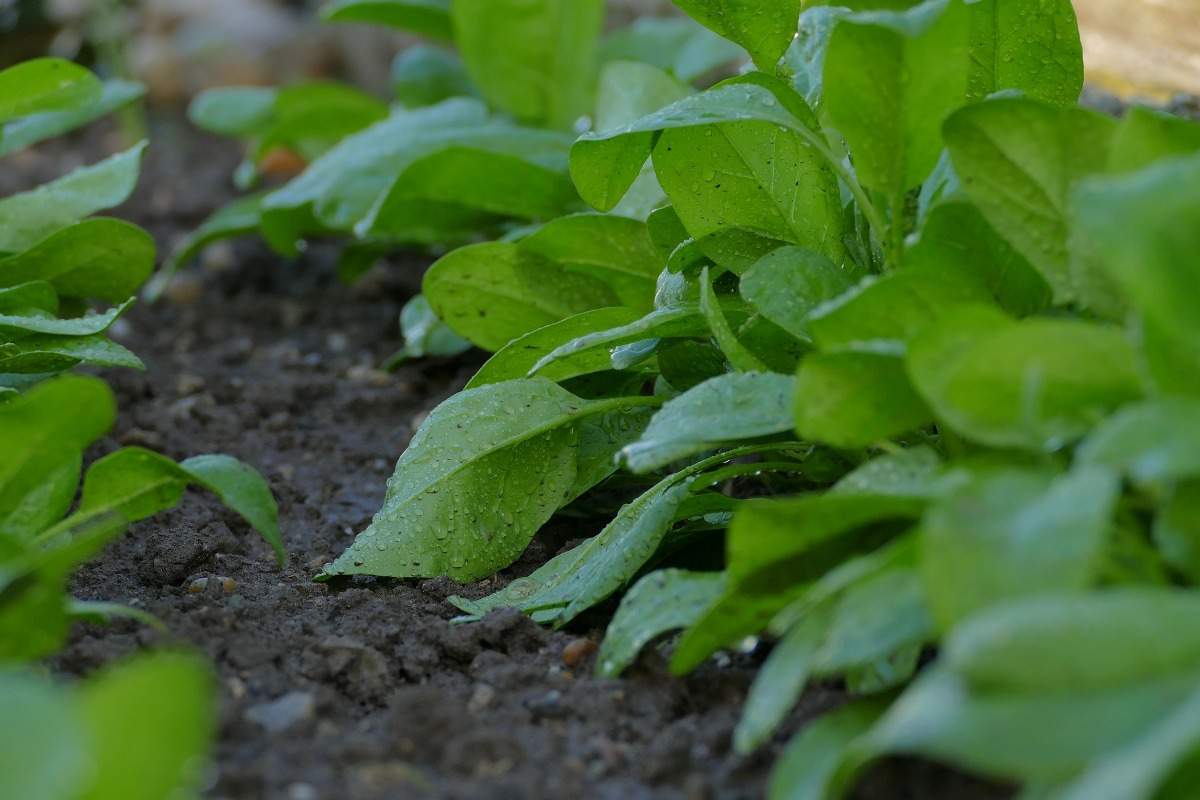Introduction to organic Spinach farming
Spinach is favorite ones of vegetable leave by consumers because it has a variety of nutrients. Spinach is a popular crop that can be planted in very early spring, as well as in fall and even winter in some areas.
A step by step guide to organic Spinach farming practices
It is one of the leafy greens that provide more nutrients than any other food. Organic Spinach is low in calories and high in vitamins and also minerals. If you’re growing organic Spinach, it grows best in the cooler weather at the beginning and end of the area’s growing season.
Site preparation for organic Spinach farming
Spinach plant requires full sun and regular water and should be planted in rich, loose soil. Before planting, work in 10-15 pounds of organic compost per 100 sq. ft. to a depth of about 8 inches. Work the soil thoroughly; taking care to break up any large clumps and rocks should be removed from the planting area. Add a source of organic nitrogen, such as blood meal and alfalfa meal to develop large, deep green leaves.

Spinach plant prefers a cool climate. The minimum temperature for Spinach seed germination is 2°C with a maximum germination temperature of 30°C and an optimum range of 7 to 24°C. Young plants can withstand temperature levels as low as -9°C. Best crop growth occurs at 15 to 20°C with a minimum temperature of about 10°C and a maximum of 32°C. Spinach plants can be grown on a variety of soils. Well, drained sandy loams well supplied with organic matter and high in pH are preferred for the early and wintered over crops because of good drainage and early soil warming. Peat soils may be used and produce the highest yields. Use a shovel to work in generous amounts of rich and organic matter. Add alfalfa meal to the soil and this will increase the nitrogen level in the soil, which will encourage fast growth. (Blood meal also adds nitrogen, and organic farmers use it, but it can attract unwanted meat-eating animals, such as raccoons.)
Healthy soil for organic Spinach farming
Healthy soil is the foundation of organic Spinach farming. Regular additions of organic matter in the form of cover crops, compost, and manure make soil that is biologically active, with good structure and capacity to hold some nutrients. Decomposing plant materials will activate a diverse pool of microbes, and also including those that break down organic matter into plant-available nutrients, others that compete with plant pathogens on the soil and the root surface. Newly incorporated organic matter, though, can reduce seed germination and increase damping-off.
Rotating between crop families can help prevent the buildup of some diseases and nematodes that overwinter in the soil. Rotation with a grain crop, preferably a crop that will be in place for one or more seasons, deprives many, but not all, disease-causing organisms of a host, and contributes to a healthy soil that promotes vigorous plant growth. Rotating between crops with the late season and early season planting dates can reduce the buildup of weed populations. Organic growers should attend to the connection between soil, nutrients, pests, and weeds to succeed.
Cover crops importance in organic farming
Cover crops help to keep soil organic matter, improve soil tilth, prevent erosion, and assist in nutrient management. They can contribute to weed management, increase water infiltration, maintain populations of beneficial fungi, and help to control insects, diseases, and nematodes. Cover crops and cash crops share susceptibility to certain pathogens and nematodes. Careful planning and monitoring are required when select a cover crop sequence to avoid increasing pest problems in the subsequent cash crops.
Spinach seed germination procedure
Spinach seeds can vary extensively in how long they will last. Some varieties will only last a year or two while others can make it for 5 years before their germination rate is affected, so read up on your varieties and store your seeds carefully for the best results. If you have problems getting your Spinach seeds to grow, their age is the likely cause, so buy some new ones and start over. When the weather is chilly but not freezing, seeds will germinate within a week of being planted. To speed germination, soak seeds for 15 to 20 minutes in a liquid kelp solution or compost tea.
Preparing a Spinach bed
Though it likes the cold, Spinach is healthiest when grown in full sun and it prefers pH level conditions where the soil is between 6.5-7.5. As a leafy green, Spinach plant grows best when given plenty of moisture and nitrogen-rich compost. Animal-based sources of nitrogen such as composted manure or blood meal tend to work best. Because the plants form a deep taproot, you will want to till the garden bed deeply to make sure the soil is loose enough for the plant root to grow down as deep as they need.
How to plant Spinach
Sow Spinach seeds directly into the ground, about 1/2 inch deep in early spring or late fall. Thin seedlings to about 6 inches apart when they are 4 to 5 inches tall. Plants like water, so keep the soil evenly moist, but not wet. Constant moisture promotes rapid growth and helps to prevent bolting. Mulching with compost will help to deter weeds and prevent moisture loss. Fertilize with fish emulsion or organic fertilizer when plants have four true leaves.
Seed rate and seed treatment of Spinach
For winter season use, seed rate of about 4-6 kg and for summer crop use seed rate of 10-15 kg per acre. Before sowing soaked seeds in water for 12 to 24 hours. It will increase the germination percentage.
Seed can be sized to be precision seeded and the fresh seed will germinate readily at soil temperatures as low as 3 to 4°C and good results are obtained at 10 to 16°C. At higher temperatures, there is a more rapid emergence but a decreased percentage of germination. Spinach seed more than a year old rarely germinates over 80%. The older seed is even less viable and germinates slowly and irregularly.
Irrigation requirement for organic Spinach farming
For proper seed germination and good growth, the soil must have enough moisture content. At the time of seed sowing if proper soil moisture is not present in soil then provide pre-sowing irrigation.
First irrigation must be given after sowing. In summer months, apply irrigation at an interval of about 4-6 days whereas in winter month apply irrigation at an interval of 10-12 days. Avoid over-irrigation also care must be taken not to water on leaves, as it will lead to the occurrence of disease and deterioration of quality. The drip irrigation system is proving to be beneficial for Spinach cultivation.
Weed management in organic Spinach farming
In case if you miss this: Methods of Organic Farming.

Weed management can be one of the biggest challenges on organic farms, particularly during the transition and the first several years of organic production. To be successful, use an integrated approach to weed management that mainly includes crop rotation, cover cropping, cultivation, and planting design, based on an understanding of the biology and ecology of dominant weed species. A multi-year approach that includes strategies for controlling problem weed species in a sequence of crops will be more successful than attempting to manage each year’s weeds as they appear. And, relying on cultivation alone to manage weeds in an organic system is a recipe for disaster. Spinach is a direct-seeded crop that cannot be easily weeded within the row, reducing the weed seed bank is an important component of organic weed management. Try to plant Spinach in fields with a recent history of good weed control.
Organic fertilizer for Spinach cultivation
Additional fertilization is not required if you have already prepared the soil by adding several organic materials. Additional fertilizing is required if you notice slow growth. You can fertilize the Spinach plants with organic fertilizers such as fish emulsion or compost tea when the plants have at least 4 true leaves.
You can be interested in using organic fertilizer. Use fish emulsion or well-rotted manure to amend the soil before planting. Side dress with any organic fertilizer that is rich in nitrogen during the growing season. Composts work well for organic feeding and can be applied once or twice per growing season. Any water-soluble balanced or nitrogen-rich organic fertilizer will work just fine.
Blood meal
One of the best organic fertilizers for Spinach is a blood meal and it is a dry, inert powder made from blood, used as a high-nitrogen organic fertilizer, and a high protein animal feed. The need for the plant and the content of blood meal is an ideal fit. Spinach crop needs a lot of nitrogen and a lot of iron to reach its potential. Considering that Spinach plant is known for its provision of iron, this isn’t surprising. Though, Spinach crops that are placed in soil conditions less than optimal for nitrogen and iron will not perform their yield potential. On the other hand, Spinach crops that are grown in environments rich in nitrogen and iron can surpass the average yield expectations, provided that the rest of the gardening is done properly. Blood meal fertilizer is the best source of nitrogen on the organic fertilizer market.
Pre-emptive fertilization
Deciding when to apply organic fertilizer can be the difference in Spinach and other crops growing well. Most people are unaware that the best time to use the fertilizer is 2 weeks before you start planting and growing the Spinach. Enriching the soil 2 weeks in advance will give the nitrogen and iron content in the soil plenty of time to equalize with the fertilizer. That will ensure that by the time Spinach puts its roots in the ground, there is an environment rich in both elements to make sure that the roots have all the nutrients they need.
Pests and diseases management in organic Spinach farming
Spinach grows so early in the year it tends to be done for the season before the worst pests and diseases become a problem. Several insects feast on Spinach plants. Though, the most common Spinach pests that affect these plants include the following;
Leaf miners – These tiny flies lay their eggs on the underside of brassicas such as Spinach, beets, and chard and the hatched larva loves to burrow in the plant leaves and create a tan, tasteless patches. You can protect crops by pulling off infected leaves or covering your beds with row cover. Leaf miners leave meandering tan trails on the plant leaves. Then, they are feeding inside the leaves, contact insecticides aren’t effective. Clip off infested plant leaves and destroy them before the larvae have a chance to mature.
Flea Beetles – Equally tiny, flea beetles come out early in the growing season and like to chew small holes in leaves, weakening them until they shrivel. If you get an infestation, row cover is the best defense, or possibly planting something that they love to eat even more to distract them from Spinach. Flea beetles feed on young foliage. The damage consists of several small holes, leaving the leaf looking as though it is been hit by a blast from a shotgun. The plant leaves sometimes have bleached and pitted areas as well. The insects are so tiny that you could never see them. Use reflective mulch or lay sheets of aluminum foil under the Spinach plants. Carbaryl and pyrethrum insecticides help reduce serious infestations.
Spinach blight – This fungus is spread by aphids and will turn Spinach leaves yellow color and stunt them. Keeping ladybugs around the garden as a natural aphid predator can help keep these pests in check, as can planting disease-resistant varieties like ‘Indian Summer’ or waiting until plants are completely dry before touching them to stop the spread of fungus spores.
Cutworms and wireworms – Cutworms cut young seedlings off at ground level and wireworms feed on the foliage and plant roots. Older transplants are less appealing to these insects than tender Spinach seedlings. To trap wireworms, plant full-grown carrots in the garden every about 2 ½ to 3 feet. And, cutworms respond to Bacillus thuringiensis (Bt) and spinosad spray.
Slugs and snails – Slugs and snails leave holes in Spinach leaves. You can tell the difference by the size of the hole slug and snail holes are larger and by the slime trail slugs and snails leave behind. Baits and traps are the best way to control insects.
Aphids – Aphids are probably the common of Spinach pests. Natural enemies keep them in check. If you need more help, use insecticidal soaps or neem oil.
Most common Spinach plant diseases are;
Damping-off – Damping-off causes seedlings to fall over and die soon after they emerge. Plant quality seeds and avoid overwatering plants to help prevent the disease. Process compost thoroughly in a hot pile before adding it to the soil.
Downy mildew – Downy mildew causes yellow or light green color spots on the upper surface of leaves with white fungus on the lower surface. Avoid planting Spinach next year if you have problems with downy mildew this year and this gives the disease spores a chance to die out.
Viruses – Viruses that infect Spinach are spread by insects, so control insect infestations as much as possible. There is no cure for infected Spinach plants. Pull up and destroy the Spinach plants to prevent the spread of the virus.
Spinach harvesting
You should not miss this: Hydroponic Farming Business Plan, Hydroponic Yield.

Depending upon variety, the crop is ready for first cutting 25 to 30 days after sowing. For Spinach harvesting, use a sharp knife or sickle. Depending upon variety and season, subsequent cutting should be done at an interval of 20 to 25 days.
Commonly asked questions about organic Spinach farming

Is organic Spinach better than regular Spinach?
Some studies have found that organic growing items have lower levels of bacterial contamination, while others suggest it is higher than in conventionally grown produce.
Should I wash organic Spinach?
Washing your organic vegetables can remove bacteria from the outside of them. Different organic vegetables need different methods of washing. Some organic veggies such as Spinach should be soaked in cool water for approximately five minutes and then rinsed off.
How long does it take for Spinach to reach maturity?
In 6 to 8 weeks you can start harvesting from any plant that has at least three or four-inch long leaves.
How many times can you harvest Spinach?
The whole Spinach plant can be harvested at once and cut at the base, or leaves may be picked off plants one layer at a time, giving inner layers more time to develop.
You may have an interest in How to Make Money from Organic Fertilizer Production.